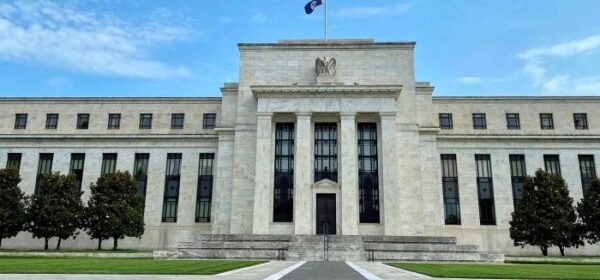US Deficit Nears 70% of the Tax Intake

The United States is set to borrow $2.3 trillion this year according to the Congressional Budget Office (CBO).
“The federal budget deficit for 2021 is $2.3 trillion in CBO’s projections. At 10.3 percent of GDP, that deficit would be the second largest since 1945, exceeded only by the shortfall recorded last year, which equaled 14.9 percent of GDP,” says Phillip Swagel, CBO’s Director.
This amounts to about 70% of the tax intake which for 2020’s fiscal year, running from July to September, stood at $3.42 trillion.
$1.609 trillion was from individual income taxes. Corporate taxes brought $211.8 billion. Social insurance and retirement receipts were $1.310 trillion. Excise taxes were $86.8 billion. Customs duties were $68.6 billion. Miscellaneous receipts were $116.5 billion. While Estate and gift taxes were just $17.6 billion.
The tax intake for 2021 is projected to be around the same at $3.7 trillion, meaning the US government is not far off from borrowing its entire income this year.
For last year, the US government did borrow 100% of its income, with CBO further stating:
“In CBO’s projections, annual deficits average $1.2 trillion a year from 2022 to 2031 and exceed their 50-year average of 3.3 percent of GDP in each of those years.”
$1.2 trillion would be close to the same level it was projected prior to the pandemic, with a lot of guesses made here in regards to tax intakes and growth as well as interest rates.
Currently interest rates are near zero, but if growth returns then they may increase, meaning the government will have to borrow even more just to cover the interest on the massive debt they have undertaken, some 25% of it added in just a year.
The above data however shows the government will never be able to repay its debt without hugely damaging acts like a massive tax increase that effectively amounts to doubling their current tax intake.
That’s because they’d be paying $1 trillion just in interest at slightly higher interest rates, or some 30% of their tax intake.
Taxes therefore will have to go up by 30% just to cover the interest, and by some 50% to make any dent on the debt, at a time when the economy is very fragile and might be harmed by such taxes, which could lead to slower growth or even a recession, bringing it all back to square one.
The rising thinking nowadays therefore is to completely ignore this debt and pretend it is not there by just having fed ‘buy’ government debt in perpetuity.
That would translate in some ways to a regressive common tax through inflation, but as it stands the problem is low inflation or even deflation, with it unclear when that might change due to a fall in the velocity of money.
All this debt therefore is more there as a constrain on nice to have things, like a high speed rail line from New York to San Francisco.
But the problem is always that the temptation is too great to ignore any constrain to the point too much is printed through government borrowing.
Nearing 100% of the tax intake arguably is not far off from such point, but Japan seems to be doing fine at more than 200% and reducing incentives for value creation through direct taxation may well be a worse alternative.
So perhaps this administration should bet on growth and ignore the debt, ease the flow of money for a booming decade, while maintaining and enforcing Fed’s obedience to ‘buy’ any and all its bonds at cheap or zero interest rates.
Source: Read Full Article

